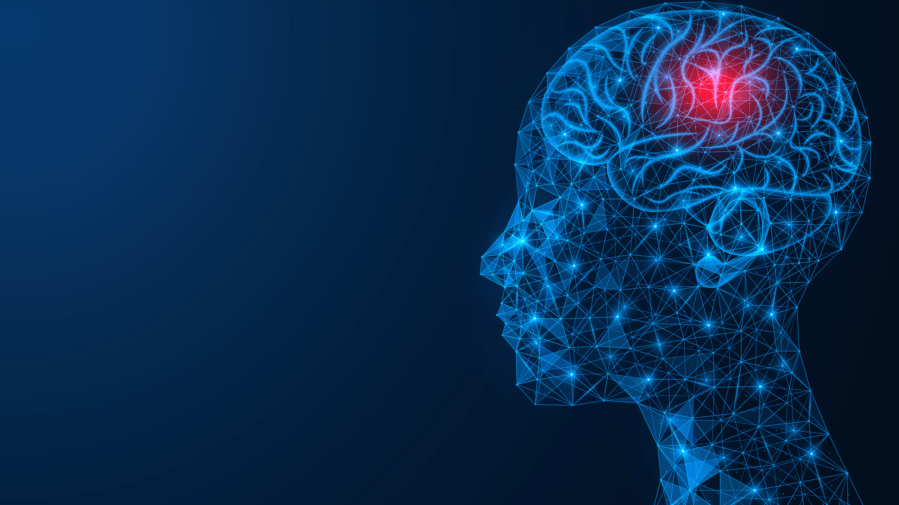
If you’ve ever had a migraine headache, you know just how debilitating the condition is — and just how much it upends your day. That’s because a migraine is much more painful and much more difficult to treat than a typical tension headache. While migraines can be occasional, some people experience them on a regular basis. In both cases, the symptoms associated with this condition can be severe and exhausting, to say the least. But thanks to essential research into the factors that cause migraine headaches, several new and effective treatments have recently become available.
What Is a Migraine?
People describe migraines as a throbbing pain or pulsing sensation, typically on one side of the head. These symptoms are sometimes preceded by an aura, which can include flashing lights, blurry vision and other visual changes. Unlike the more common tension headaches, migraines are often accompanied by nausea, vomiting and extreme sensitivity to light and sound.

Additionally, migraines can last for several hours and, in severe cases, sometimes days. The pain can be so severe that it gets in the way of daily activities. The Global Burden of Disease Survey published in The Lancet reported that migraines result in a substantially reduced quality of life.
Typically, migraines progress through four phases, although you may not go through every phase each time one comes on. The first phase is known as the migraine prodrome. The prodrome may include early symptoms such as unusual food cravings, fluid retention and mood changes and can begin as early as 24 hours before the onset of headache pain and nausea. The next phase is the aura, which typically involves visual disturbances such as flashing or bright lights. This is followed by the attack phase, which often begins with mild pain that becomes more severe over time. The postdrome is the period after the headache pain has resolved. You may feel exhausted and experience generalized weakness and confusion that can last an entire day.
Looking at the Causes
It is not yet clear exactly what causes migraines. Several theories exist, including disorders of the central nervous system, chemical imbalances in the brain and one or more genetic factors. Known risk factors for developing migraines include age, biological sex (or assigned sex) and family history.

Factors that can cause migraines in people who are susceptible to them include stress, anxiety, too much or not enough sleep, hormonal fluctuations or overexertion. Migraines can be triggered by prescription drugs, including birth control pills, and also by food, especially alcohol, caffeine, salty and processed foods, and some artificial sweeteners. Specific health conditions that have been associated with migraines include heart disease and stroke, fibromyalgia, depression and post-traumatic stress disorder. For these reasons, it is always important to discuss your migraines with your physician.
Episodic and Chronic Migraines
There are several different types of migraines but the most common are episodic and chronic migraines. Episodic migraines occur sporadically on as many as 14 days in a single month. According to the American Migraine Prevalence and Prevention Study, 17% of American women and 6% of American men experience episodic migraines. It’s important to note that episodic migraines do not have an aura.

Chronic migraines occur on 15 or more days per month over a period of 3 months or more. While chronic migraines may be triggered by a central nervous system disorder, they are often the result from overuse of migraine medications. People with chronic migraines are likely to have more severe headaches, other forms of chronic pain, depression and/or previous head or neck injuries.
Migraine Treatments
While some people can control migraines with over-the-counter drugs such as acetaminophen or ibuprofen, others respond effectively to a class of drugs known as triptans. The US Food and Drug Administration (FDA) recently approved several new medications that target the brain protein calcitonin gene-related peptide (CGRP). Three of these new drugs — erenumab, fremanezumab and galcanezumab — are monoclonal antibodies that block the actions of CGRP. In addition to preventing migraines, these drugs can help reduce migraines’ frequency, intensity and duration.

Other new drugs include rimegepant and lasmiditan, which are medications that can be taken in pill form to block an acute attack. Another new treatment that may be helpful for migraines is non-invasive vagus nerve stimulation therapy. This type of treatment allows headache patients to administer electrical stimulation using a specialized device.
Natural Treatments for Migraines
Some patients have found success with more holistic approaches to migraines. These treatments include meditation and mindfulness training, acupuncture and essential oils. Another popular technique is acceptance and commitment therapy (ACT), which helps one accept the fact that they may have migraine pain, all while helping them focus on other important goals.

Other natural treatments that have been used to prevent migraines include vitamin B2, coenzyme Q10, melatonin and butterbur-based remedies. Additionally, magnesium supplementation might be helpful for those with low magnesium levels. As always, you should discuss any new therapies with your physician before starting treatment.
Making Lifestyle Changes
In addition to these new medical and natural treatments for migraines, your physician may suggest making lifestyle changes. Losing weight and managing stress and anxiety through exercise and relaxation techniques may help to reduce the number and severity of migraines.

Moreover, results from a recent paper published in the journal Nutrition, Metabolism, and Cardiovascular Diseases revealed that a low-fat diet might result in fewer migraines. You might consider eliminating some of the more common triggers for migraines from your diet, including processed foods, alcohol, chocolate and caffeinated beverages. Migraines can also be caused by dehydration. If you think that you might not be taking in enough water, set an alarm to remind yourself to drink water throughout the day.
If possible, keep a log of potential migraine triggers, including not getting enough sleep, eating certain foods, and/or taking different medicines. Do your best to establish a regular sleeping pattern and consistent nutrition, as fluctuations may influence the frequency and intensity of your migraines. For quick relief, use ice packs or cold compresses on your forehead, scalp or neck. If environmental factors are worsening your experience, sitting in a dark, quiet room can help to alleviate some of the pain. As always, it is important to consult with your physician when developing a plan to monitor and treat your migraines.
Resource Links:
- “Understanding Research: What is the American Migraine Prevalence and Prevention (AMPP) Study and What We Have Learned From It?” via American Migraine Foundation
- “Are the new migraine medications working?” via Harvard Health Publishing
- Ferrara LA, Pacioni D, Di Fronzo V, Russo BF, Speranza E, Carlino V, Gargiulo F, Ferrara F. “Low-lipid diet reduces frequency and severity of acute migraine attacks” Nutr Metab Cardiovasc Dis. 2015;25(4):370-5
- Vos T, Flaxzman AD, Naghavi M, Lozano R, Michaud C, Ezzati M et al. “Years lived with disability (YLDs) for 1160 sequelae of 289 diseases and injuries 1990-2010: a systematic analysis for the Global Burden of Disease Study 2010” Lancet. 2012;380(9859):2163-2196





